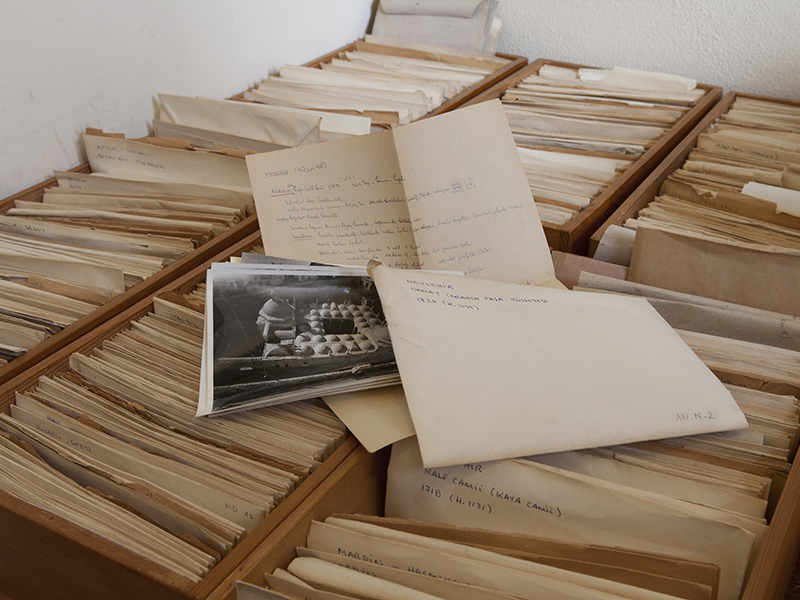
The most comprehensive and systematic archives of Robert College and American College for Girls are in Columbia University's Rare Books and Manuscripts Library, New York. Majority of the documents in this collection are produced in Istanbul and New York. The archive contains written and visual materials on financial and educational matters in addition to detailed observations on the political issues of the time and information on everyday life.

Aptullah Kuran took meticulous notes on each and every architectural artefact that he examined, placed these notes in square envelops which he carried along with him, compared the information he gathered with his previous notes and put together the smaller versions of his survey drawings and photographs.

Bulgarian students constituted the largest student group of Robert College from the 1870s to 1890 and many politicians, intellectuals, writers and thinkers came out of this group. These archival documents provide information about the school years of Bulgarian students, as well as about the ongoing ties of these students with Robert College, even after their graduation.

Baltacıoğlu Collection is a product of the friendship between professor Ismayıl Hakkı Baltacıoğlu who witnessed the end of the Ottoman Empire and the establishment of the Turkish Republic in his thirties and his young protégé Haldun Özen, who received engineering education in Istanbul and Ankara with a keen interest in social sciences.

Aziz Ogan who in 1918 started his career as an inspector at the Izmir Museum of Antiquities prepared many reports on archaeological excavations carried out in the vicinity of Izmir. His notes and reports on the foundation of Izmir, Bergama and Efes museums and the drafts of the guides he prepared for the Efes Ayasuluk and Ayasofya museums are important documents for the history of archeology in Turkey.




